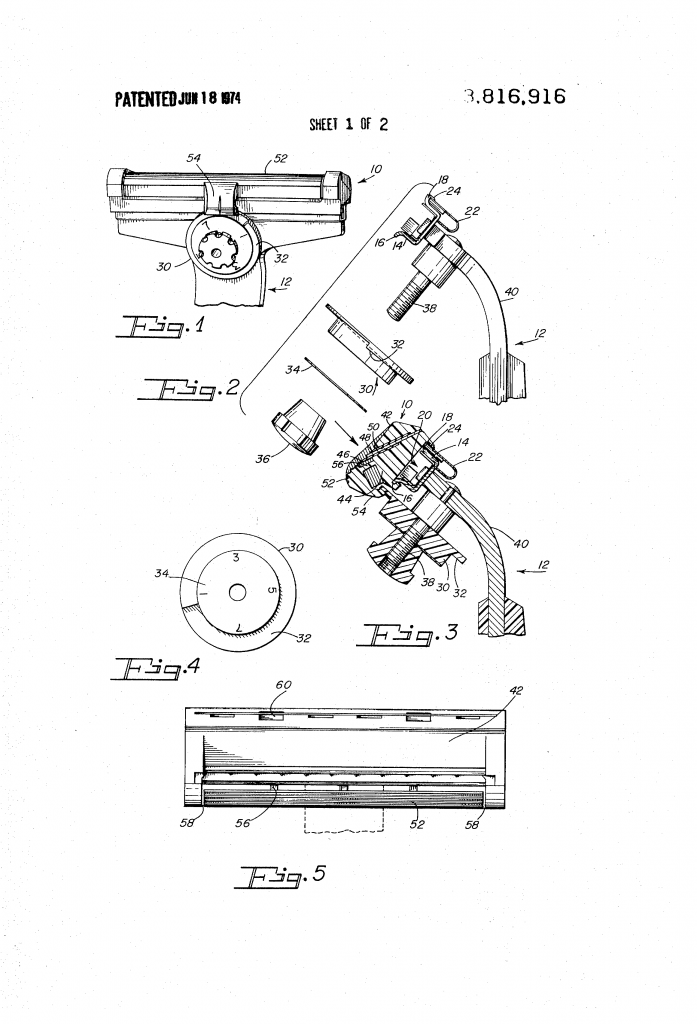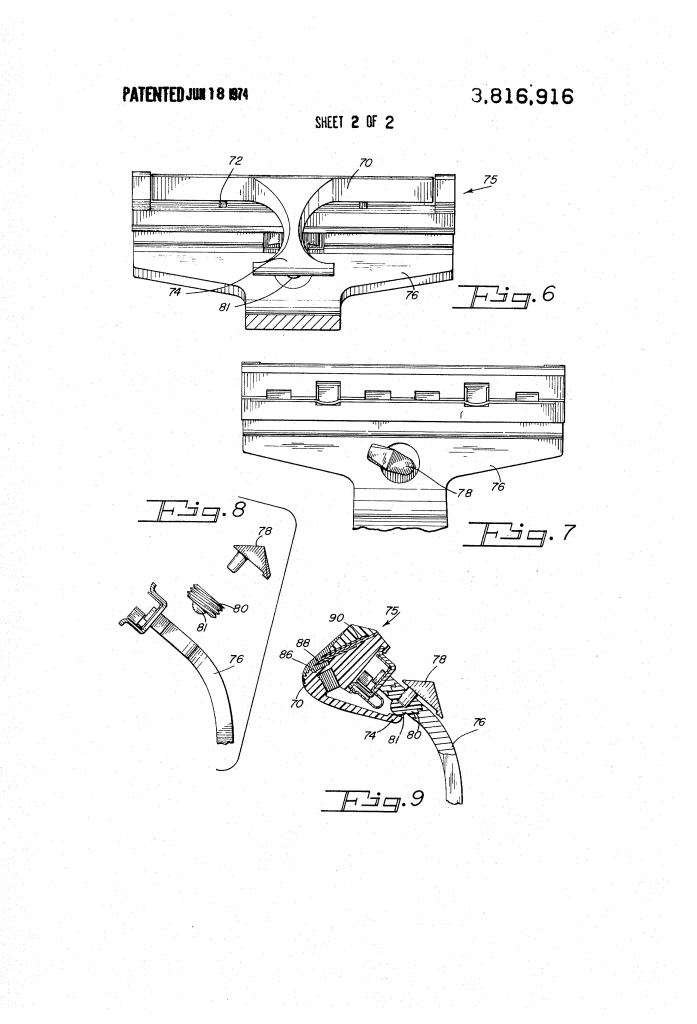There is more than one way to skin a cat. In the same vein, there is more than one way to make adjustable razors. As I mentioned last week, you can change the distance between the top cap and bottom plate. You can change the blade curvature. Or you can more the guard back and forth. This last option seems to have been a minor obsession of the Warner Lambert Co. – because in addition to the patent by Peter Bowman and Ernest F Kiraly assigned to Warner Lambert, I found a slightly earlier patent by Mr Leopold K Kuhnl that is also assigned to Warner Lambert. And it is adjustable in the same manner, but differs in the details.
I strongly suspect that the Leopold Kuhnl who is behind this razor is non other than Leopold Karl Kuhnl, a prolific inventor who had more than his share of injector patents. Unlike his injectors, but like Mr Bowman and M Kiraly’s razor, this patent mainly deals with a disposable or cartridge razor. This means that unlike most adjustable razors, the entirety of the mechanism was contained in the head.
Adjustability
The patent hinges on a hinged guard. The guard could move back and forth in relation to the cutting edge. This, in turn, would make the razor more or less aggressive. Or, as the patent states in the typical verbose way;
An elongated serrated guard bar 52 is spaced forwardly and downwardly from the cutting edges of the blades 46, 48 by a plurality of ribs 56. Each end of the guard bar 52 is spaced a slight distance at 58 from the blade seat member 44. The guard bar 52 has a cam follower member 54 extending downwardly therefrom.
From US patent 3,816,916
A cam member 30 is mounted on a frame 40 of the holder 12 by means of a threaded bolt 38 which is rigidly secured to the cam member 30 and to a knob 36. The cam member 30 has a cam surface 32 for abutting engagement with the cam follower member 54.
The cap and blade seat members 42, 44 are formed of moldable plastic. The guard bar 52 and the ribs 56 are molded integrally with the blade seat member 44 such that the cam follower member 54 is accurately biased into abutting engagement with the cam surface 32. Thus, rotary movement of the cam member 30 by means of the knob 36 causes the guard bar 52 to move with respect to the cutting edges of the blades 46, 48 to thereby adjust the shave angle of the cartridge 10. A plate 34 having numerals radially displayed thereon is provided to give a user an indication of the shave angle setting of the cartridge 10.
Or in laymans terms; twiddle the knob to move the guard back and forth.
The drawings
The patent describes two ways to do this, by the way. The preferred method is a cam, as described in the quote. The second way is by a screw acting on a lever. The second method looks mechanically simpler, but required a more awkwardly shaped cartridge. They are neatly shown in the drawings.


My thoughts on these adjustable razors
There is little doubt that moving the guard back and forth will make a razor adjustable. It does require several small and fiddly parts when compared to the rather hefty parts that makes up an adjustable twist-to-open Gillette.
Still, as I mentioned last week, the main benefit would be to have all the parts contained in the head of the razor. Adjustable razors with interchangeable handles would increase the flexibility. I can see a razor like this being made and sold with several options for handles. Or even with two or three handles of differing weight and length as part of the standard package.
There is also no logical reason to limit this kind of mechanism to a disposable or cartridge razor. Any single edge razor could do, if care is taken during the design phase.
The full patent can be read at Google Patents, and while razors.click don’t have the patent up (yet) they do have the inventor’s biography.
